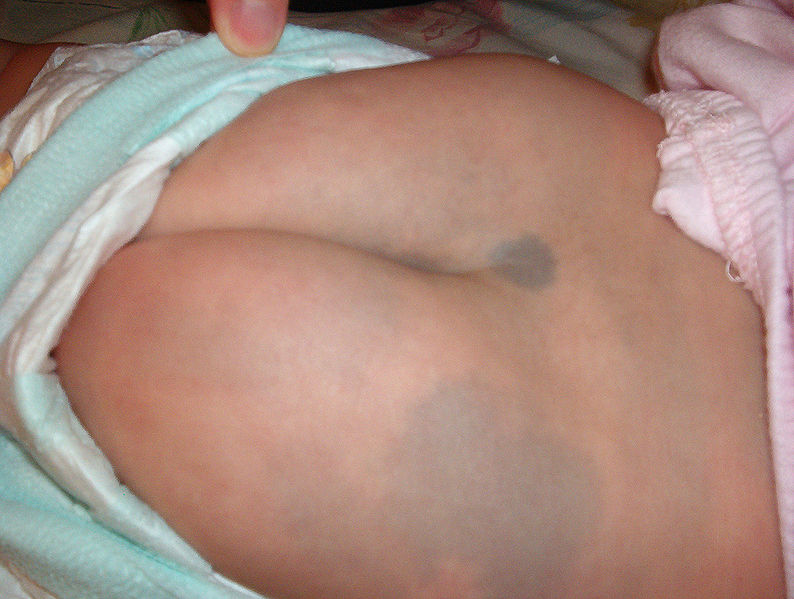WBR0433
| Author | [[PageAuthor::Rim Halaby, M.D. [1] (Reviewed by Serge Korjian)]] |
|---|---|
| Exam Type | ExamType::USMLE Step 1 |
| Main Category | MainCategory::Behavioral Science/Psychiatry |
| Sub Category | SubCategory::Dermatology |
| Prompt | [[Prompt::A 1-month-old girl is brought to the pediatrics clinic by her parents for concerns over persistent bruising over the lower back. Otherwise, the parents report that the child is developing normally. Upon examination, you note the following lesions on the patient’s back (shown below). Which of the following is the best next step in the management of this patient? |
| Answer A | AnswerA::Reassurance |
| Answer A Explanation | [[AnswerAExp::In the context of a normally growing infant that does not appear to have any abnormality, the physician is only required to reassure the patient’s parents because generally, Mongolian spots disappear by early childhood.]] |
| Answer B | AnswerB::Calling the police |
| Answer B Explanation | [[AnswerBExp::Although child abuse, which requires immediate calling the police, should always be in the differential diagnosis of Mongolian spots, child abuse would not cause such characteristic bluish-lesions despite their resemblance to traumatic bruises. Child abuse can have more symptoms also, such as multiple fractures of different ages, retinal hemorrhages, subdural hematomas, etc… all of which are not present in this child. In the case of child abuse, the infant care may probably be compromised as well and the development of the child may be delayed.]] |
| Answer C | AnswerC::Performing x-rays |
| Answer C Explanation | [[AnswerCExp::Further testing is not required for patients with Mongolian spots who are otherwise healthy.]] |
| Answer D | AnswerD::Genetic testing |
| Answer D Explanation | [[AnswerDExp::Further testing is not required for patients with Mongolian spots who are otherwise healthy.]] |
| Answer E | AnswerE::Bone marrow biopsy |
| Answer E Explanation | [[AnswerEExp::In the case of a hematologic malignancy that can cause thrombocytopenia and easy bruising, a bone marrow biopsy is indicated; but the child is not expected to be growing with normal development.]] |
| Right Answer | RightAnswer::A |
| Explanation | [[Explanation::The patient’s physical examination is consistent with Mongolian spots or congenital dermal melanocytosis. It is characterized by one or many benign bluish patchy self-limited lesion(s) that is/are very common in infants and typically is/are located at the lower back region, the buttocks, and/or the shoulders. The condition results from entrapped melanocytes in the dermis because of inhibited neural crest cell migration to the epidermal layer. Diagnosis is only clinical. Further work-up in an otherwise healthy child is unnecessary and treatment is not needed because the lesions are self-limited. The physician should reassure the patient’s family about the benign condition. Educational Objective: Mongolian spots are benign patchy self-limited lesions that are very common in infants. They are a clinical diagnosis and require no treatment. |
| Approved | Approved::No |
| Keyword | WBRKeyword::Mongolian spot, WBRKeyword::child abuse |
| Linked Question | Linked:: |
| Order in Linked Questions | LinkedOrder:: |
